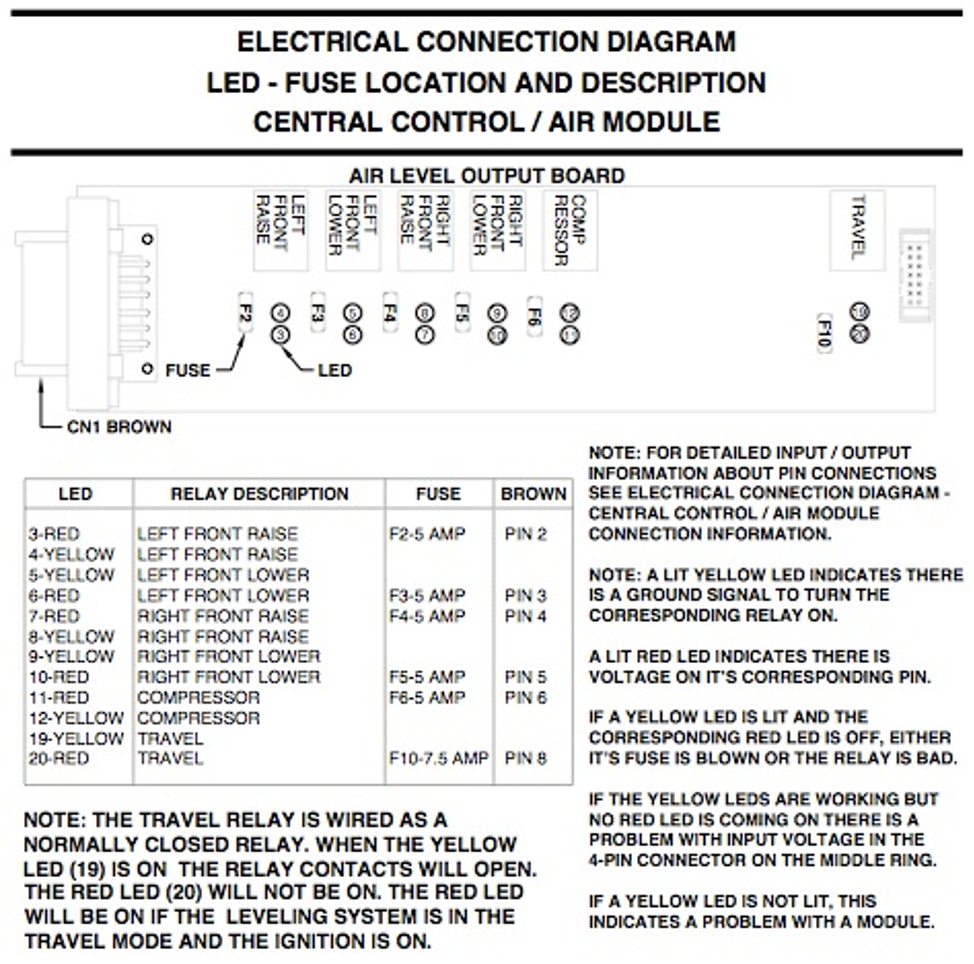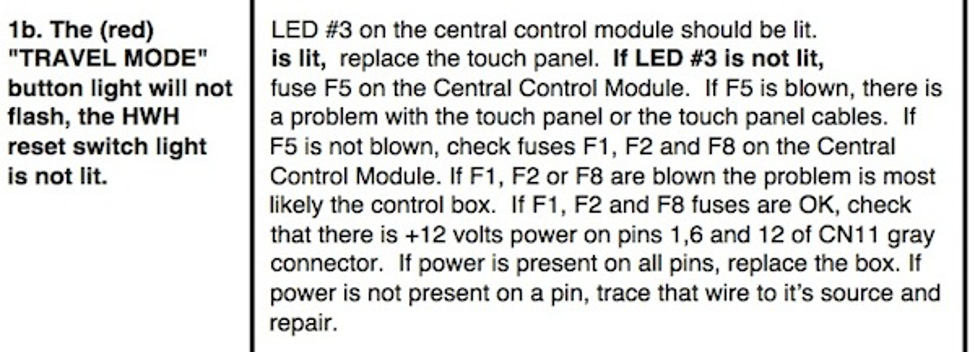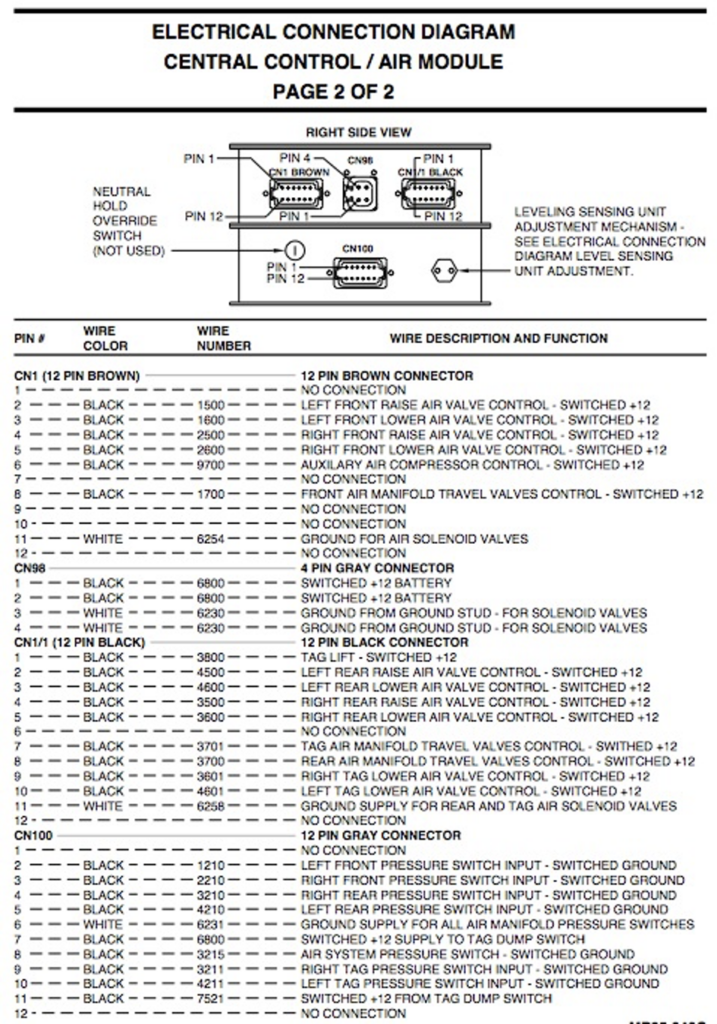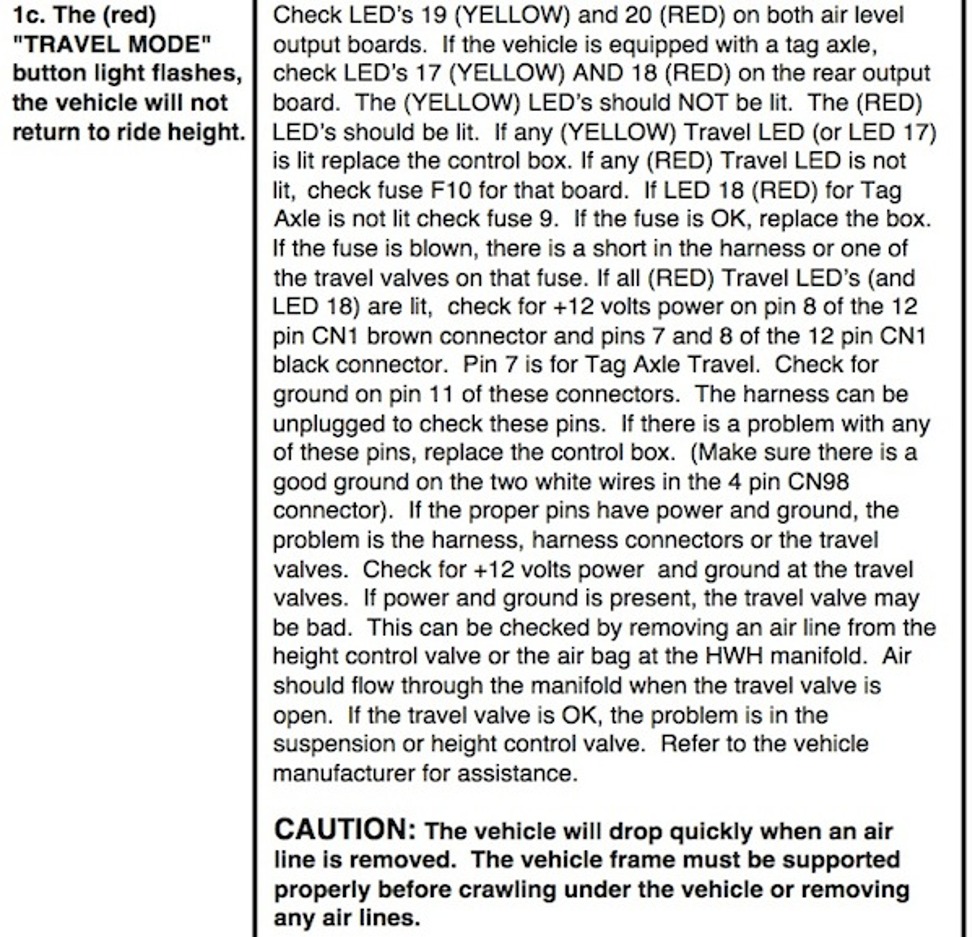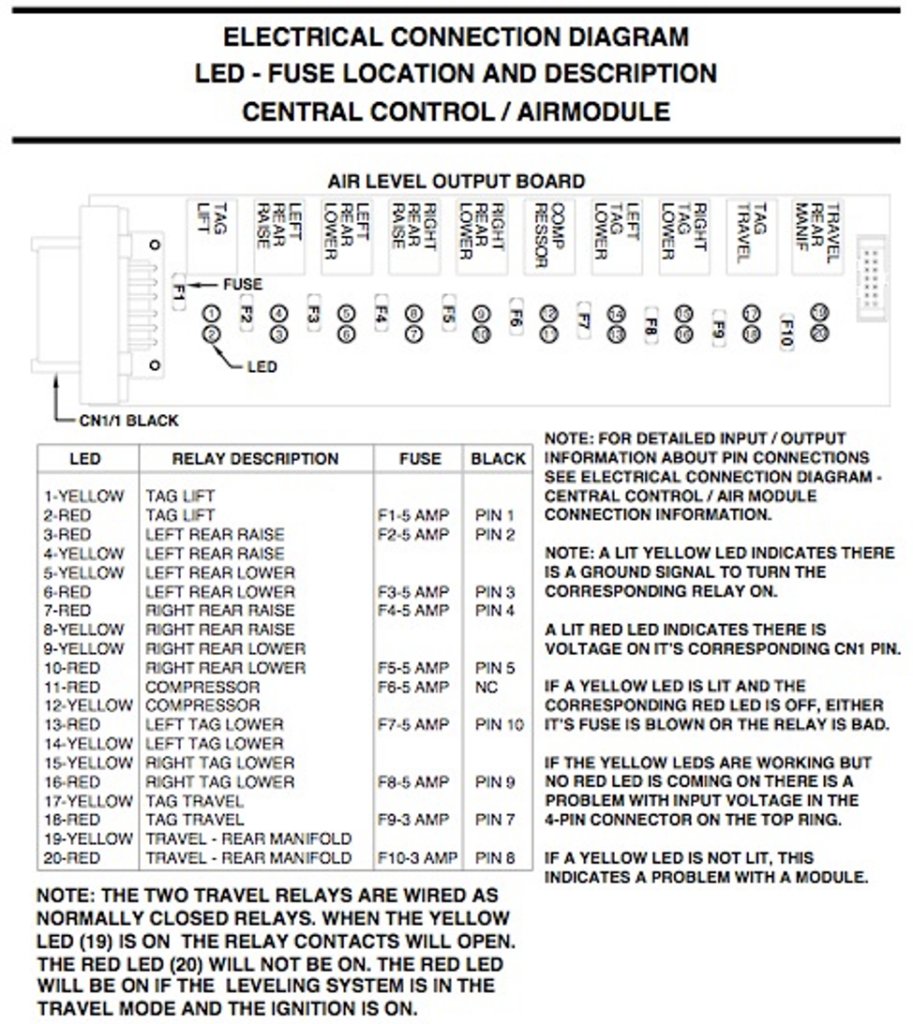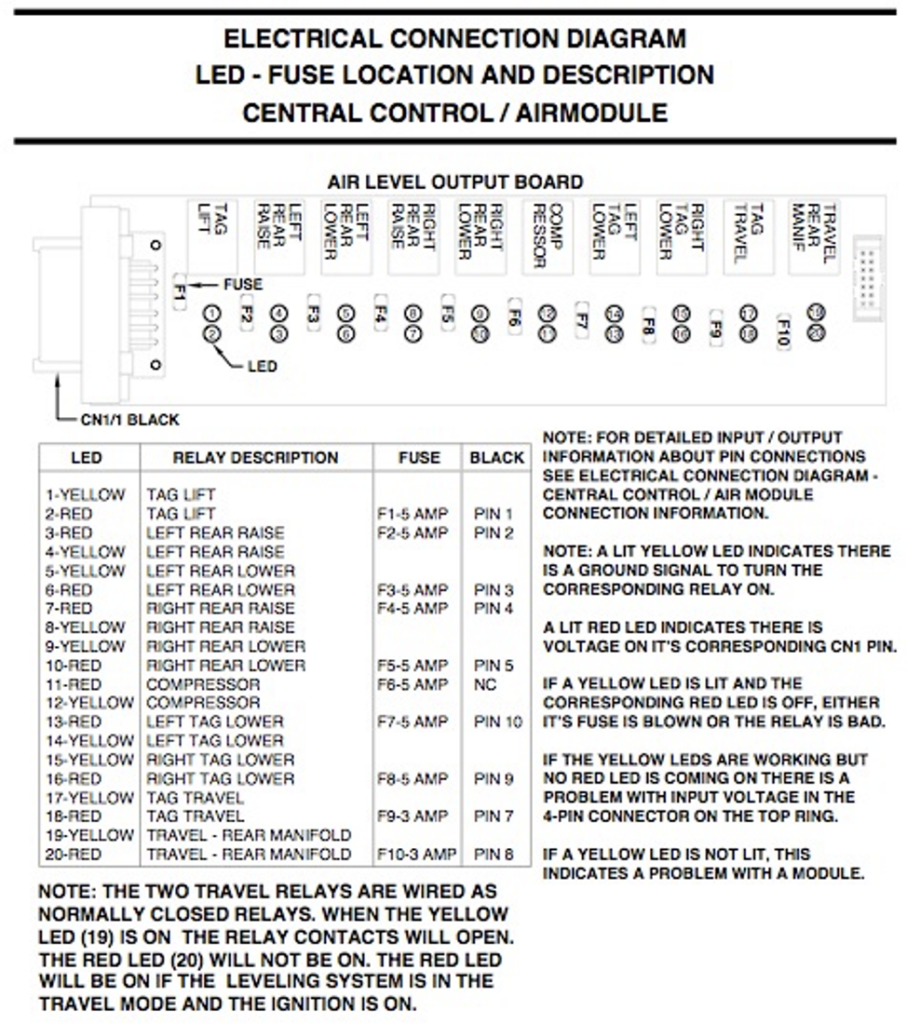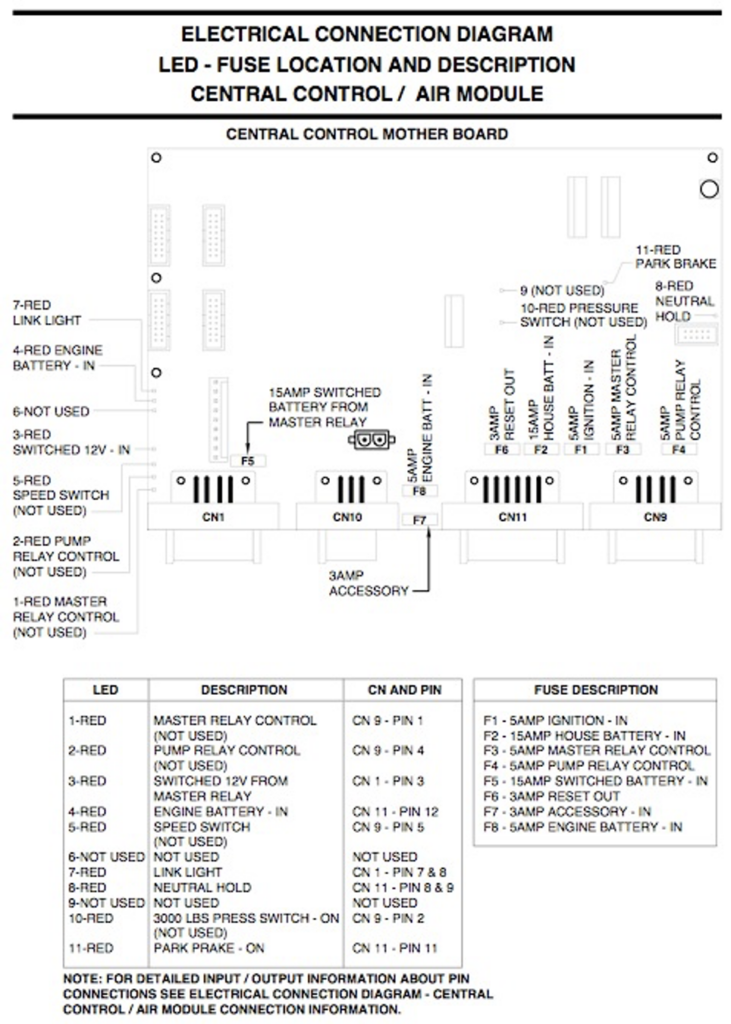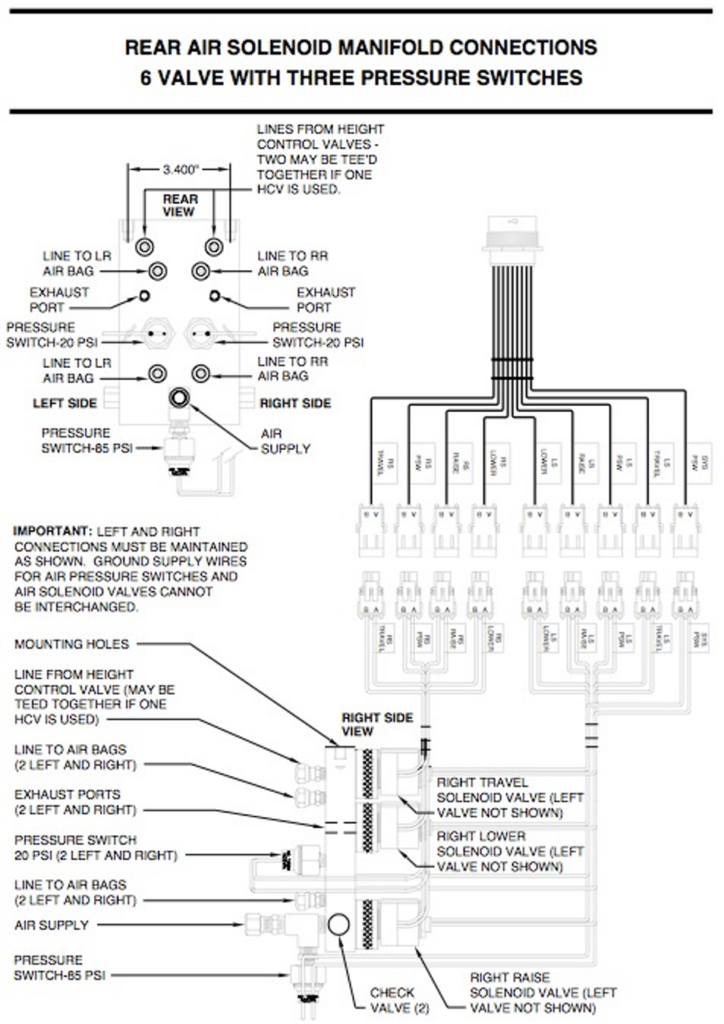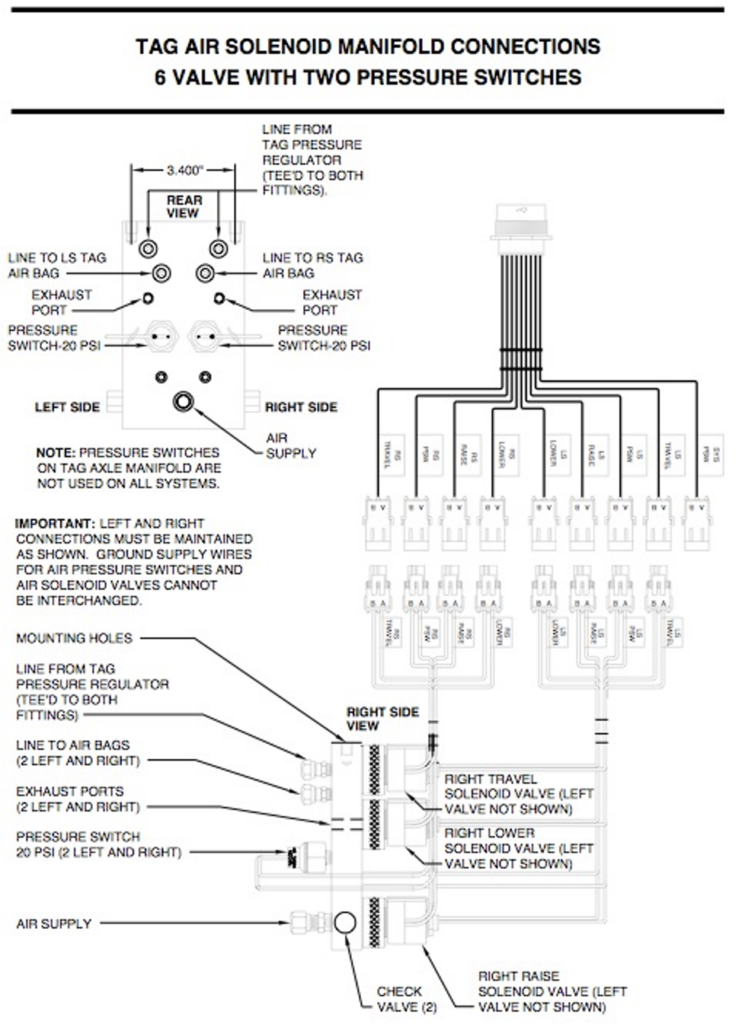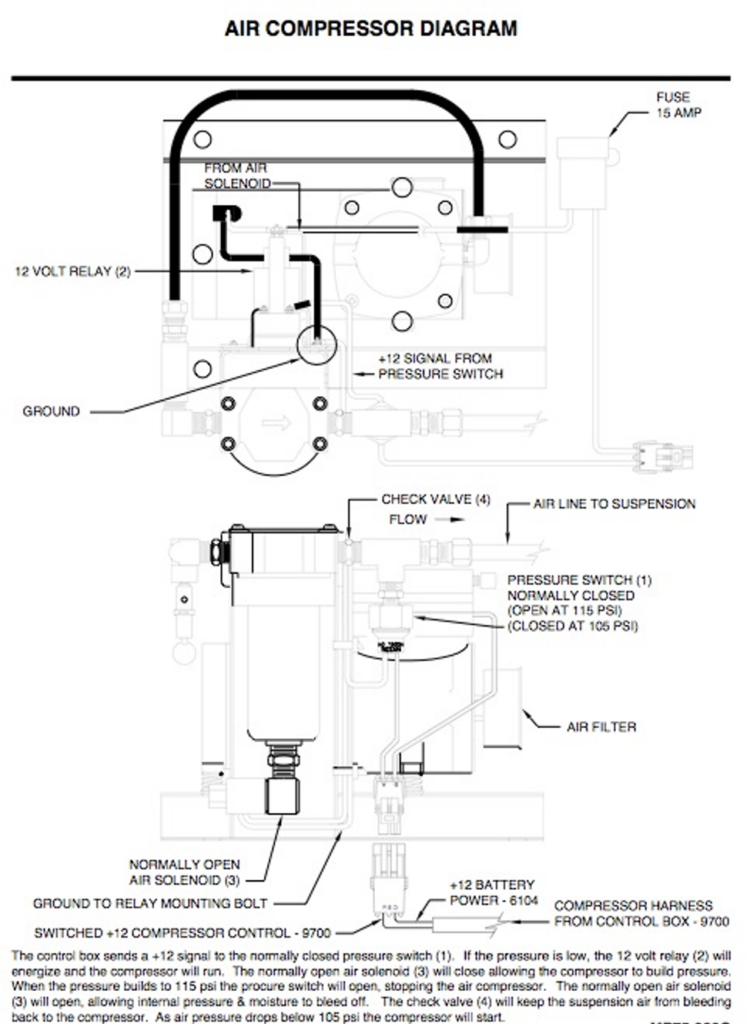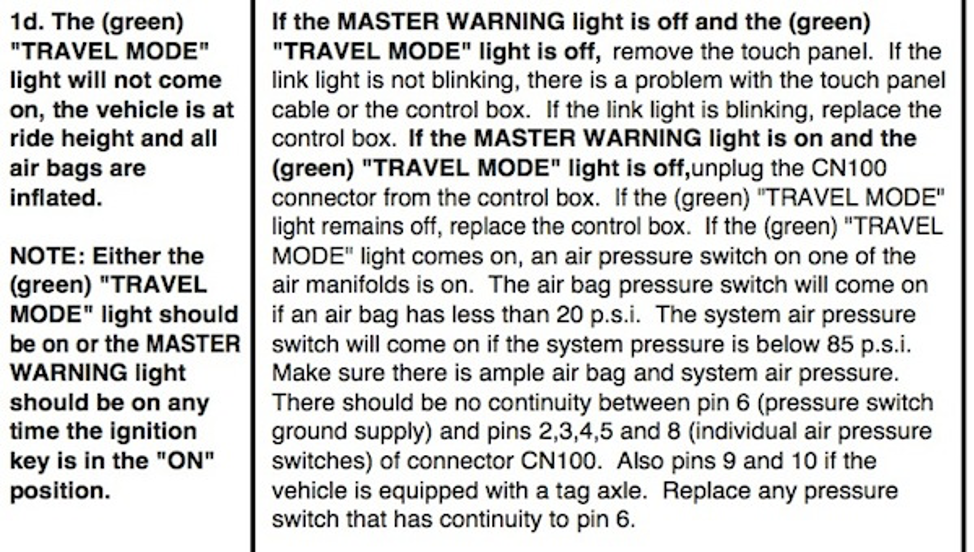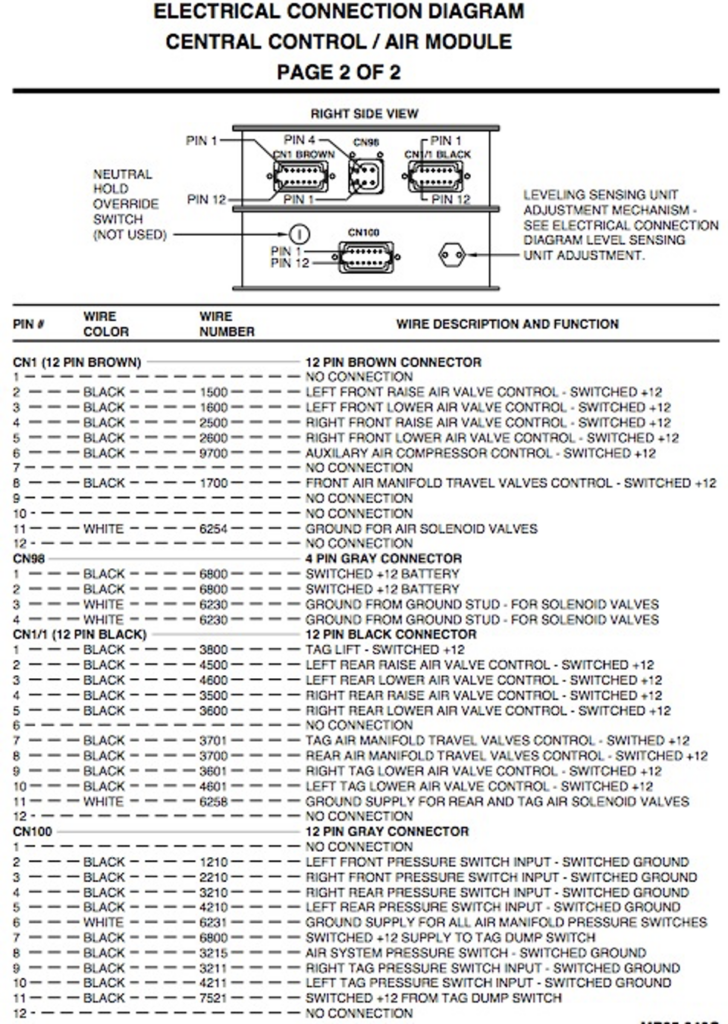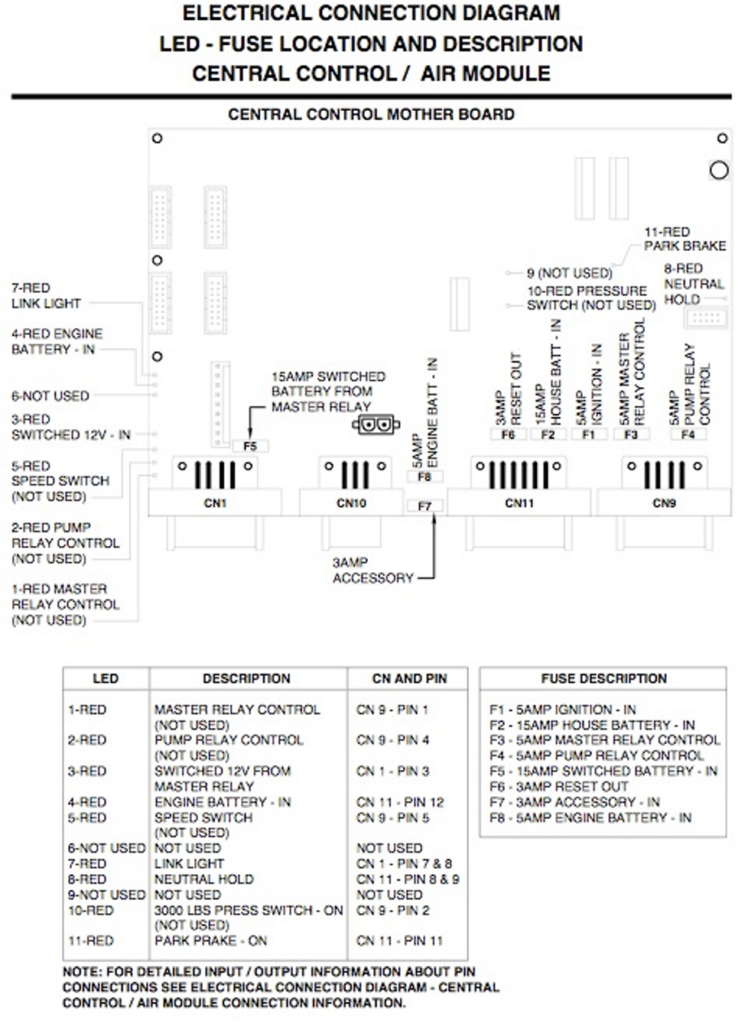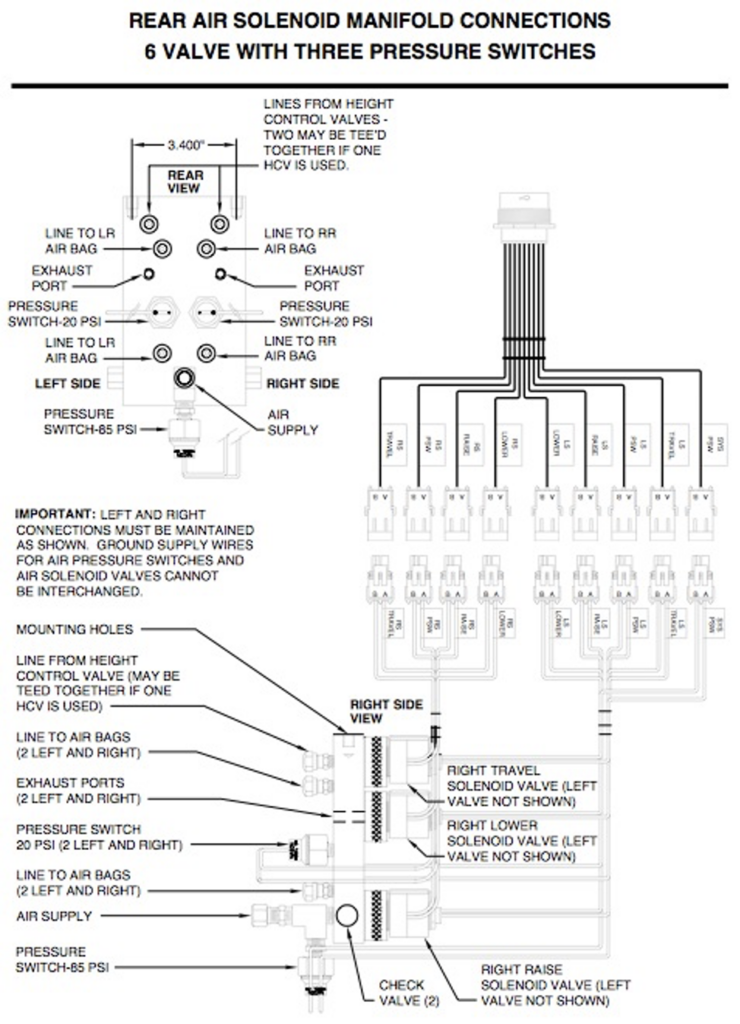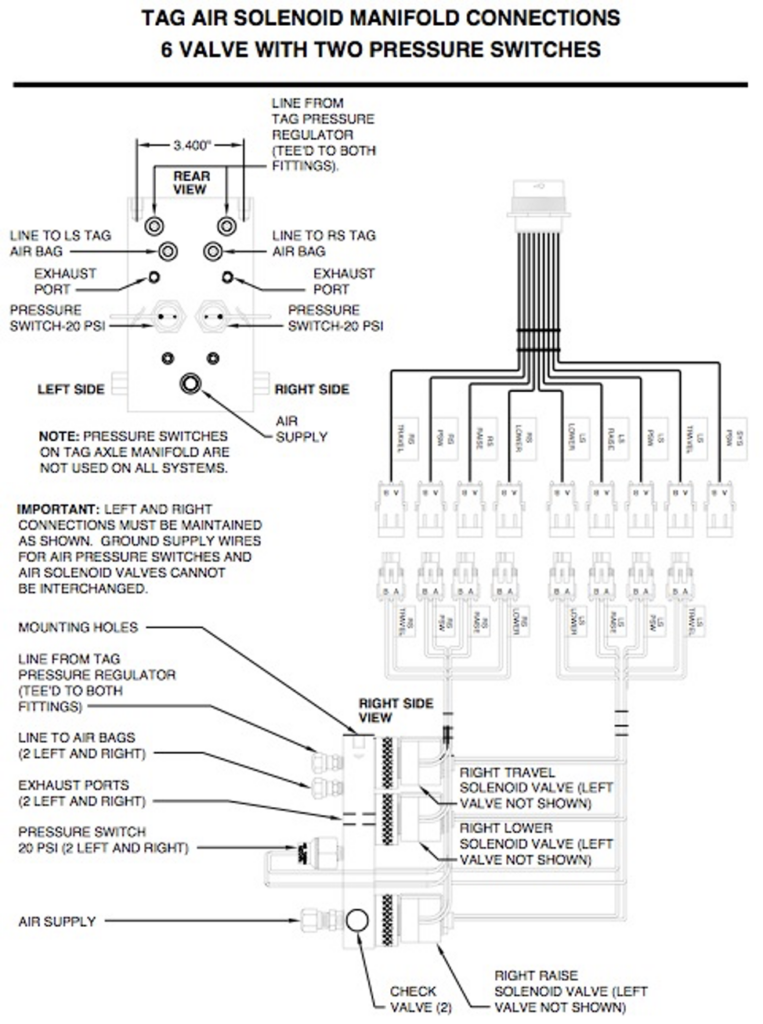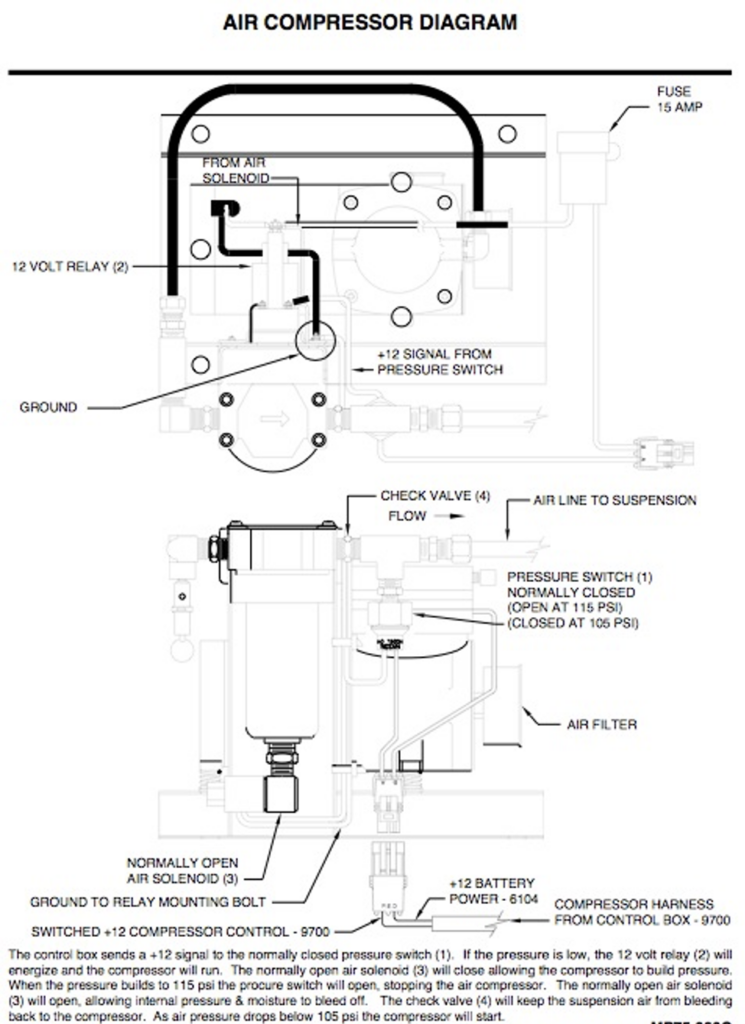When a vehicle is in the travel mode, the correct ride height is maintained by the height control valves. the HWH system is not used to raise or lower the vehicle when traveling.
NOTE:
The “Dump” and “Raise” functions of the HWH Leveling system allow the vehicle to be moved at very slow speed for a short distance with the suspension in a lowered or raised position. The “DUMP” and “RAISE” functions will be discussed in depth later in this textbook. The following schematic shows a basic two-axle air leveling system in the travel mode.
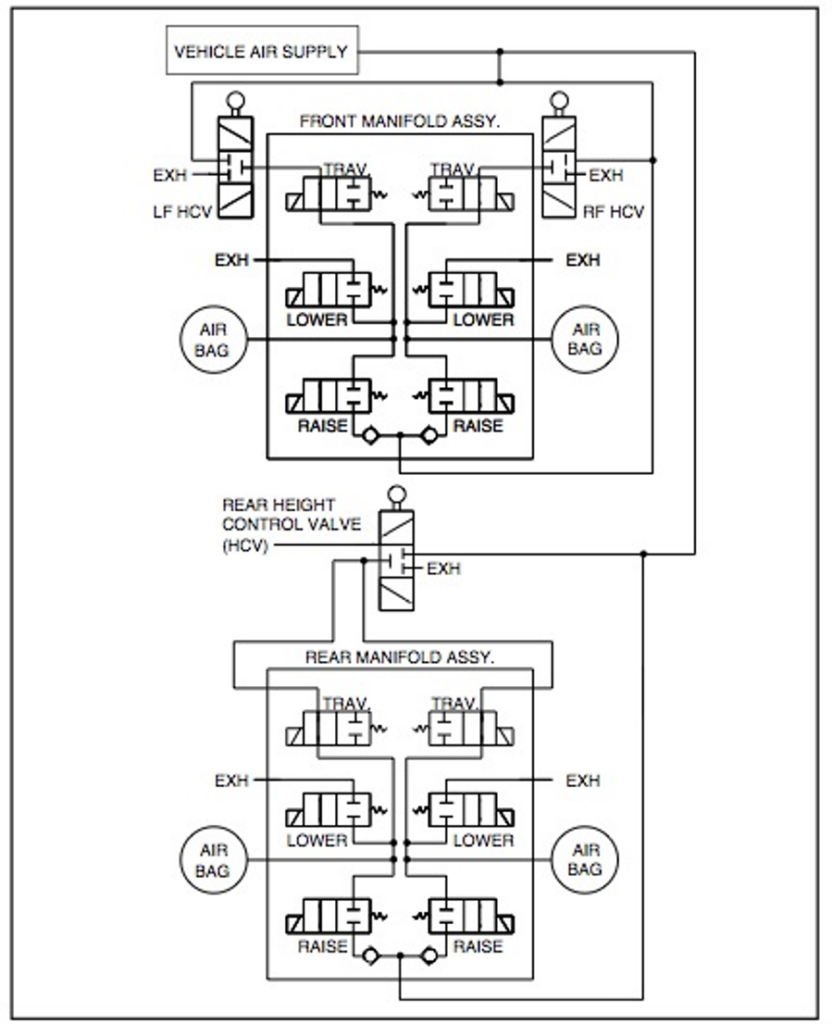
Note that there are three valves for each airbag. There is a raised valve, a lower valve, and a traveling valve. The valves are very simple, electronically operated valves. All of the valves are normally closed valves, which means that they will not let the air by until they are electronically activated. Each valve has an electronic coil which is activated by applying (+12) volts to one side of the coil and grounding to the other side of the coil.
With HWH air leveling systems, the (+12) volts to the valve is switched while the ground for the valve is constant. All of the valves are the same and are interchangeable. In the schematic, the travel valve is drawn in the on (open) position. This allows the height control valve to function by letting the air pass to and from the airbags through the travel solenoid valve. Again, the raise and lower valves are not used when the system is in the travel mode.
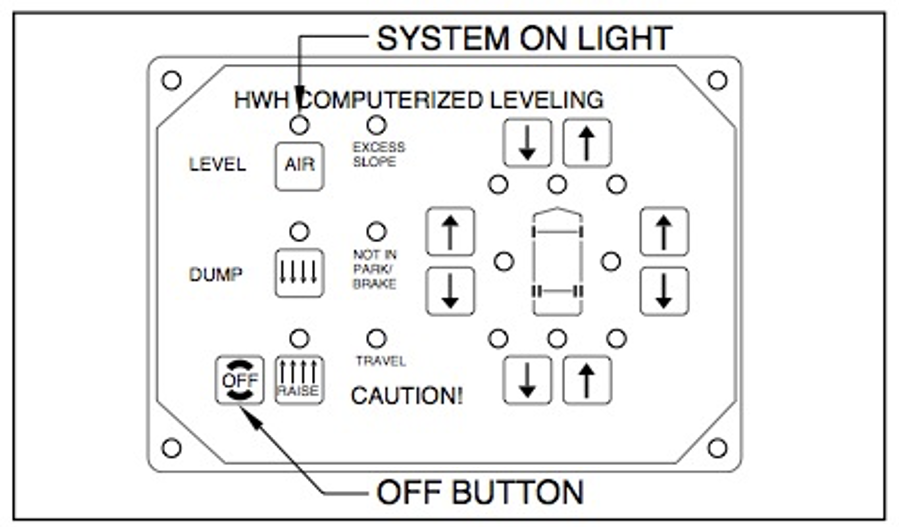
Anytime the travel valves are closed, the airbags are isolated from the height control valves. To energize the travel valves the vehicle ignition switch must be in the “ON” position. The travel valves can not work if the ignition is off. Also, the HWH leveling system panel must be off.
If the system on the light on the panel is lit, the travel valves will remain off. By pushing the “OFF” button, if the ignition is on, the travel valves will be energized. Also, if the ignition is on and the leveling system panel is on, the travel valves can be energized by releasing the park brake. This will turn the leveling system off and energize the travel valves with a (+12) volt signal.
The only exception to this, at this time, is on Newell vehicles with air leveling only. The Newell leveling system panel has a “TRAVEL” button above the “OFF” button. The ignition must be “ON” for the vehicle to return to the travel mode but the system will not return to the travel mode until the “TRAVEL” button is pushed or the parking brake is released, even if the leveling system panel is off. If the leveling system panel is on and the ignition is in the “ON” position, the “TRAVEL” button must be pushed to return the system to the travel mode.
Pushing the “OFF” button will only turn the system off. This was done so that when the leveling system panel is off, the ignition key could be turned on without the vehicle returning to travel height.
IMPORTANT:
Except for Newells the “TRAVEL” light on the touch panel indicates the travel valves are on when the “TRAVEL” light is lit. The “TRAVEL” light being off does not indicate the travel valves are off.
The number of travel valves used depends on the vehicle and the type of system. The older three-point leveling systems will have three travel valves, one for the front and two for the rear. The four-point leveling systems will have four travel valves, one for each wheel.
Electrically the travel valves are tied together. Normally there is a separate harness for the front and rear axles. If the vehicle is equipped with a tag axle, it is normally wired through the drive axle harness. All travel valves are energized through a single fuse. A problem with one travel valve may cause a problem with all of the travel valves.
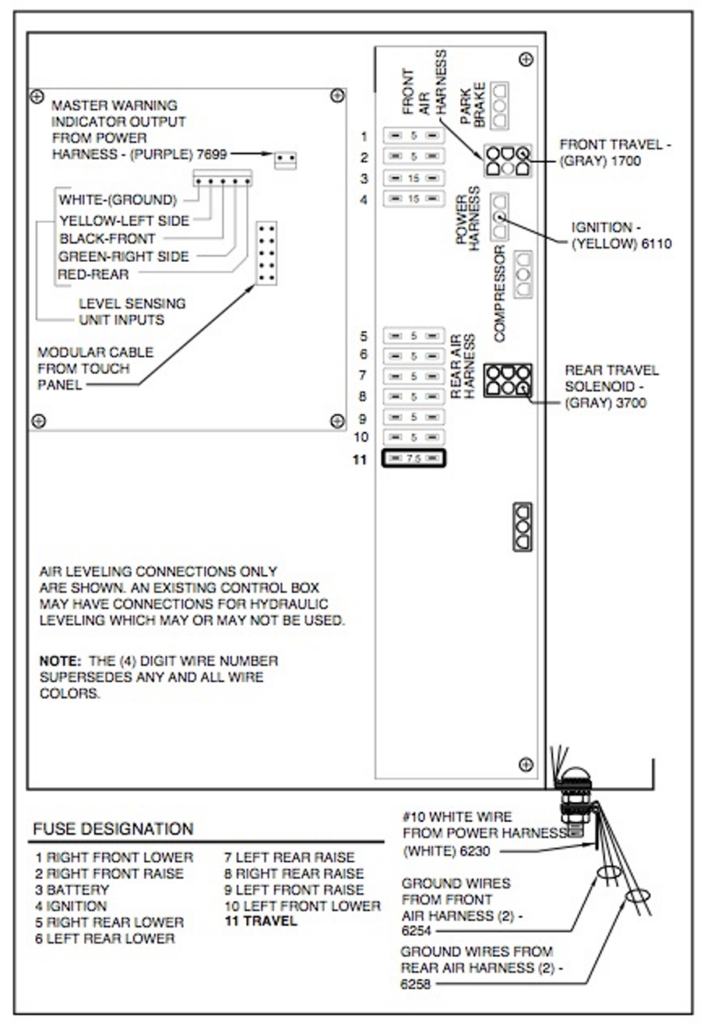
T Handles
The T-handles on-air solenoid manifolds are used to bypass the travel solenoid valves. When the T-handles are opened, (turned counter-clockwise) air is allowed to pass between the air bags and height control valves without the travel solenoid being energized. When the T-handles are closed, the travel valves must be on for the height control valves to function.
The T-handles were designed to be used during the manufacture of the vehicle. Since most manifolds are not mounted to be accessible from outside the vehicle, it is not recommended that the T-handles are used for emergency TRAVEL purposes. No one should be under a vehicle when it is supported solely by the air suspension.
VEHICLES WITH TAG AXLES
If the vehicle is equipped with a tag axle, normally there will be one travel valve for each wheel. The following schematic is of a Monaco coach with a tag axle. The travel valves are drawn in the ON (open) position.
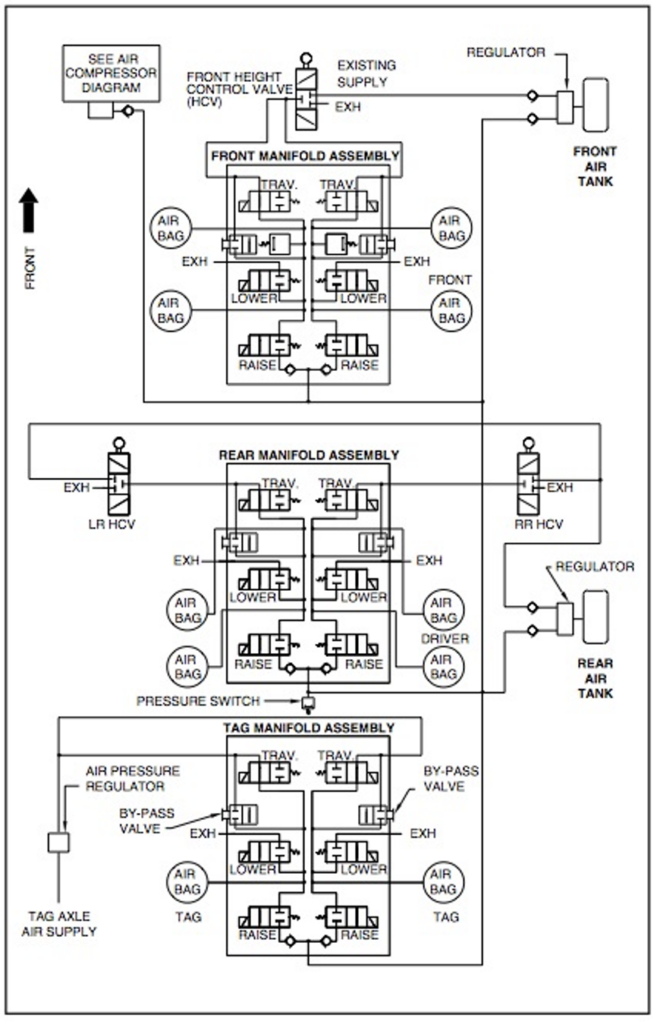
In this schematic, the tag axle is controlled independently from the drive axle. The air pressure for the tag axle suspension bags is controlled by a pressure regulator. Other arrangements for controlling the tag axle are possible. It is important to determine how the tag axle is controlled when designing the correct leveling system for the vehicle.
The following two schematics show tag axles controlled by the drive axle height control valves. Note that one tag axle has a separate leveling system manifold. The other system shows the tag axles’ airbags plumbed directly into the drive axle airbags. These schematics are also drawn with the travel solenoid valves in the ON (open) position.
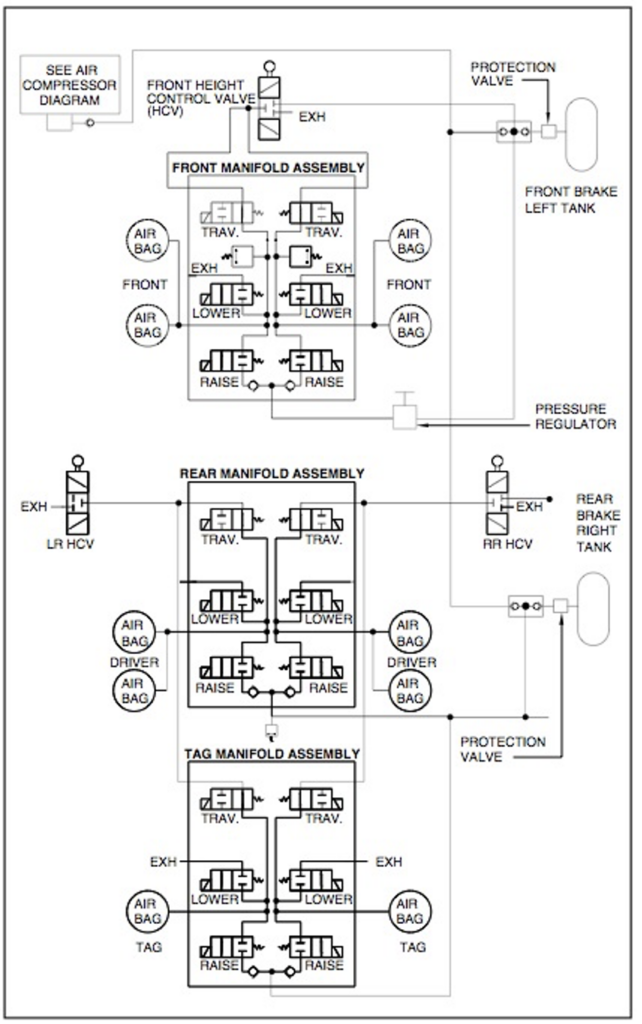
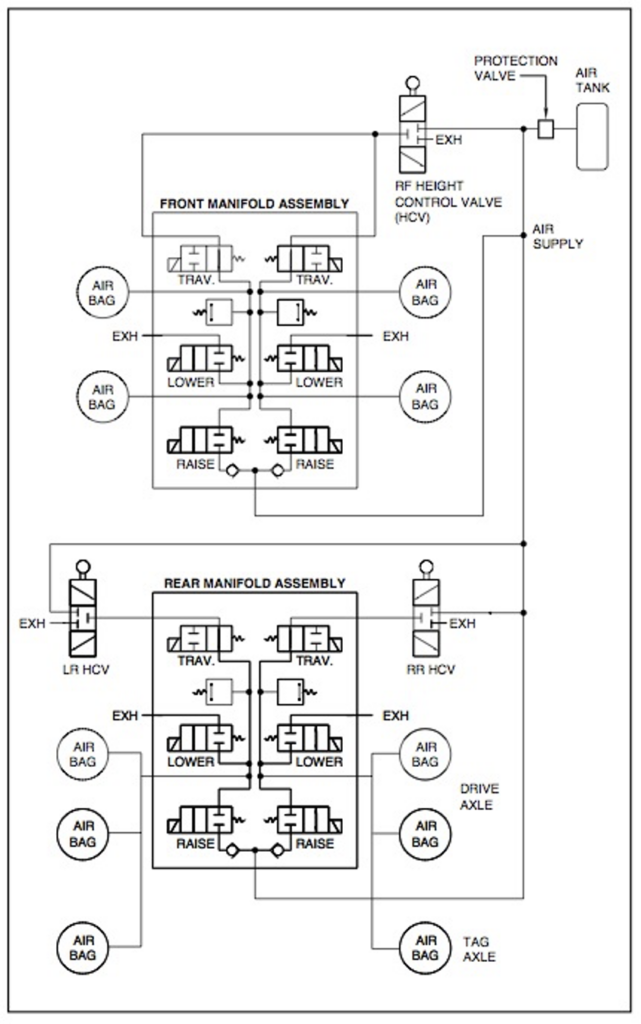
When the leveling system is in the travel mode the tag axle is allowed to function as it normally would.
TROUBLESHOOTING

